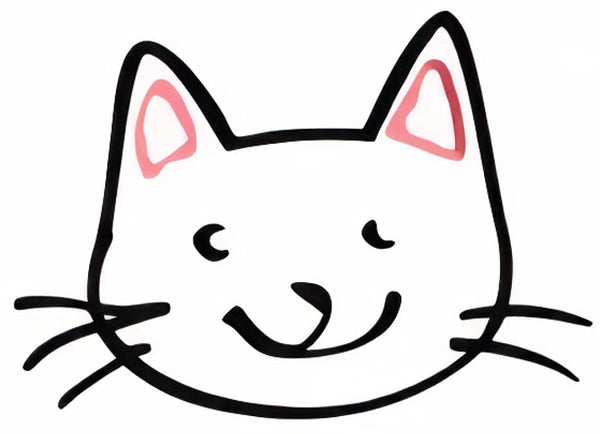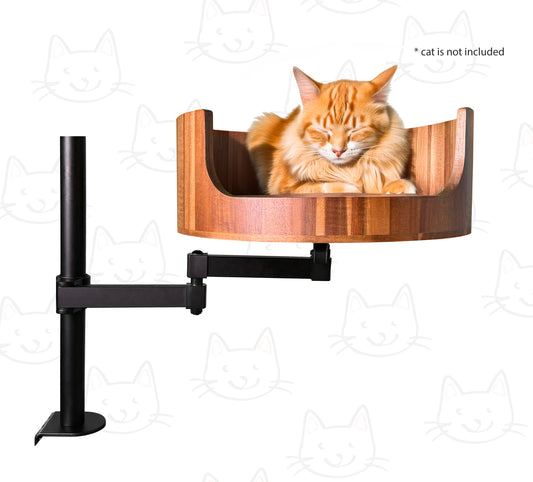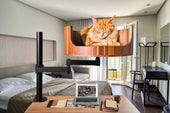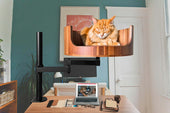
Cats Wagging Tail Meaning: Understanding Feline Signals
Share
Have you ever noticed your cat wagging its tail and wondered what it meant? Cats often use their tails to communicate their feelings and intentions, but interpreting these signals can be tricky for pet owners. Understanding the meaning behind a cat's tail movements can help you better understand your furry friend's emotions and behaviors.
In this article, we will explore the different meanings behind a cat wagging its tail, from a gentle flick to a rapid swish. We will also discuss how tail wagging can indicate excitement, aggression, fear, or contentment in cats. By learning how to read your cat's body language, you can strengthen your bond with your pet and ensure a harmonious relationship. So next time you see your cat's tail in motion, you'll be equipped to decipher what your feline friend is trying to tell you.
1. Cats wag their tails as a form of communication, with different movements conveying different emotions and intentions.
2. A slowly swishing tail typically indicates a relaxed or content cat, whereas a rapidly thrashing tail can signal agitation or aggression.
3. Paying attention to subtleties in tail movements can help cat owners better understand their feline companions and avoid potential conflicts.
4. Tail wagging is just one aspect of a cat's body language, which also includes ear position, vocalizations, and overall body posture.
5. By interpreting and responding to their cat's tail signals, owners can strengthen their bond and create a more harmonious living environment.
## why do cats wag their tails
Cats wag their tails as a way of communicating their feelings and emotions. Unlike dogs, whose tail wagging generally signifies happiness, a cat's tail movements can have various meanings. For example, a slowly swishing tail could indicate that a cat is feeling annoyed or agitated, while a rapidly flicking tail might suggest that the cat is feeling playful or excited. Understanding the nuances of tail wagging can help cat owners better interpret their pet's moods and reactions.
## body language signals
A cat's body language can provide valuable clues to its emotional state, with tail wagging being just one of many signals to look out for. Other body language indicators include ear position, facial expressions, and posture. When a cat's tail is held upright and vibrating slightly, it could be a sign of a friendly greeting. On the other hand, a tail held low and puffed up may indicate fear or aggression. By observing a cat's overall body language in conjunction with tail movements, pet owners can gain a deeper understanding of their feline companion's feelings.
## health concerns
While tail wagging is a normal behavior for cats, excessive or unusual tail movements could be a sign of underlying health issues. For example, a cat that is constantly swishing its tail or holding it in an unnatural position might be experiencing pain or discomfort. In some cases, tail wagging could be a symptom of a neurological disorder or injury. It is important for cat owners to monitor their pet's tail wagging patterns and consult a veterinarian if they notice any concerning changes. Regular check-ups can help ensure that any potential health problems are addressed promptly.
Frequently Asked Questions
What does it mean when my cat wags its tail?
When cats wag their tails, it can signal different emotions depending on the context. In general, a cat wagging its tail rapidly can indicate that the cat is feeling agitated or irritated. On the other hand, a slow, gentle wagging of the tail can sometimes mean that the cat is feeling playful or curious.
Is the Desk Cat Nest a suitable solution for addressing my cat's wagging tail?
The Desk Cat Nest can provide a cozy and comfortable space for your cat to relax and feel safe, which can help reduce stress and anxiety that may be causing excessive tail wagging. However, it's important to also address the root cause of your cat's behavior and consult with a veterinarian or behaviorist if needed.
How can I effectively use the Desk Cat Nest to help with my cat's tail wagging?
Place the Desk Cat Nest in a quiet and peaceful area of your home where your cat feels secure. Encourage your cat to use the nest by adding their favorite toys or blankets inside. Spending quality time with your cat in the nest can also help create positive associations and reduce stress.
Are there any other tips for managing my cat's tail wagging behavior?
Ensure that your cat has plenty of mental and physical stimulation through play and exercise. Providing a consistent routine and a comfortable environment can also help reduce stress and prevent excessive tail wagging. If the behavior persists or worsens, seek guidance from a professional to address any underlying issues.
In conclusion, incorporating a Desk Cat Bed into your cat's environment can greatly help with decoding your cat's wagging tail meaning. This versatile and cozy bed provides cats with a comfortable and secure space to relax and observe their surroundings, reducing stress and anxiety levels that may cause tail wagging. By offering a designated and elevated space for your cat to retreat to, the Desk Cat Bed promotes a sense of security and tranquility, ultimately leading to a happier and healthier feline companion. Invest in a Desk Cat Bed today to enhance your cat's well-being and deepen your understanding of their communication cues.



















































